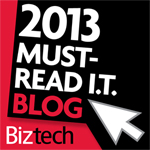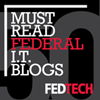The MIT Industrial Liaison Program holds an annual conference for its sponsors focused on technology and telecommunications. This year’s event had excellent breadth, featuring Esther Dyson, the CTO of Blue State Digital (developers of Obama’s online social media platform), the director of MIT’s game development lab in Singapore and several others. The one presentation that really got me thinking was by the IT Energy Coordinator for MIT’s own infrastructure, Laxmi Rao.
Her presentation centered on the consumption of electricity by computing infrastructures and what some organizations are doing to improve power efficiency. There were two things I took away from her talk.
Power Usage Efficiency is Under-Appreciated
The average data center is very inefficient in its ability to effectively move electricity from the power grid to the computers that need it. One measure of power efficiency is Power Usage Effectiveness (PUE) which measures the ratio of total power coming into a data center to the power that actually reaches the computing devices (there is a lot of great PUE info here). Laxmi said that the typical data center has a PUE of 2.0, or about 50% efficiency. Some say the average is worse. So what? Inefficient power usage wastes money and power.
Cloud Infrastructure Providers Are Doing Something Right
While the typical data center is inefficient, the massive data centers built recently by Google, Amazon and Microsoft, represent not only a new trend in cloud-based computing but also a view into the next generation data centers. Specifically, each of these vendors are emphasizing power and cooling strategies and have lowered their PUEs into the 1.2 - 1.3 range, according to Laxmi and other published reports. They are achieving this through large scale application of water and air cooling techniques, hardware configurations and data center designs.
—
After all of the “easy” techniques have been applied, like virtualization and server consolidation, we will all be faced with a capacity issue that will require more strategic thought to solve. For some, maybe adding on to an existing data center will make sense. For others, like one of our consumer products clients in the southeast, there was no more power available from the utilities in their region.
All IT leaders should take it upon themselves to get smarter about how much power we are using and if there are lower cost and lower impact ways to consume it. I believe that the cloud infrastructure providers’ efforts provide at least a model for us to follow to improve our private infrastructures if not a service to seriously consider.
Did you enjoy this article? Please subscribe to CIO Dashboard to receive the latest posts!



Pingback: Sustainability: A Million-Dollar Opportunity for the CIO — CIO Dashboard